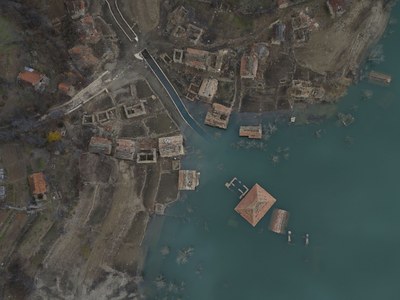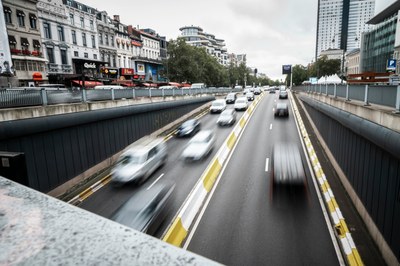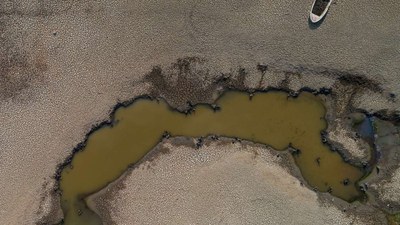All official European Union website addresses are in the europa.eu domain.
See all EU institutions and bodiesThis page lists all the design components used as building for our websites. The page mainly used to perform various technical audits and tests. The EEA Design System offers more information about our design language and guidelines for the use of these design components.
Table of contents
Table of contents (horizontal)
Below the table of contents layouted as an horizontal menu.
Standard text with image
As well as premature death, air pollution causes ill health and adds significant costs on the health care sector. For example, in 2019, exposure to PM2.5 led to 175,702 years lived with disability (YLDs) due to chronic obstructive pulmonary disease across 30 European countries.
From 2005 to 2020, the number of early deaths from exposure to PM2.5 fell by 45% in the EU. If this trend continues, the EU is expected to deliver on the zero pollution action plan target of a 55% reduction in premature deaths by 2030.
Figure 1. EU exports of used textiles to other regions, 2000, 2010 and 2019, percent
Source: UN Comtrade; HS (as reported): 6309,6310, Period: 2000, 2010, 2019 , Reporters: EU
Note: Throughout the past two decades, Africa has been the main receiving continent of used textiles from the EU. But by the end of the period, Asia had significantly increased its share and by 2019 was almost as big as Africa as can be seen from Figure
Image with copyright info
Below an image with alt-text and copyright displayed on it.

Video
Below an embedded video.
Accordion
Below an example of the accordion component.
Tabs
Below some examples on how tabs can be used.
Default tabs
Below the default horizontal tabs.
Climate change is already impacting Europeans’ daily lives and will continue for the foreseeable future. Even if we effectively reduce global emissions, it will worsen. Flooding, droughts, heatwaves and other climate-related hazards are becoming more intense and more frequent. These hazards have significant health and economic costs.
The EU is approaching climate change in two ways:
Climate mitigation - Preventing or reducing the emission of greenhouse gases into the atmosphere to make the impacts of climate change less severe.
Climate change adaptation - Actions to adapt to the impacts of climate change, like preventing flooding, saving energy, and reducing disaster risks
In 2021, the EU made climate neutrality by 2050 a legally binding goal, and set an interim target of a 55% emission reduction by 2030. This goal forms the foundation of The European Green Deal, a roadmap for the EU to become climate neutral by 2050.
Data from the Copernicus Climate Change Service
Copernicus Climate Change Service
shows 2020 as the warmest year ever recorded in Europe. Evidence indicates that this rise in temperature is due to rising greenhouse gas emissions from human activity.The average temperature globally is also 0.95 to 1.20°C higher than it was in late 19th century. In scientific communities, an increase of 2°C is often defined as the threshold for when there will be catastrophic consequences for the climate and the environment.
It is not all bad news, though. In recent years, the EU has taken steps to reduce emissions globally and adapt to the effects of climate change. In 2008, the EU aimed to cut emissions by 20% - compared to 1990 levels – by 2020. That goal was met, and new more ambitious targets were defined for 2030 and 2050.
Vertical tabs
Below the vertical tabs with dark background (aka inverted).
Climate change is already impacting Europeans’ daily lives and will continue for the foreseeable future. Even if we effectively reduce global emissions, it will worsen. Flooding, droughts, heatwaves and other climate-related hazards are becoming more intense and more frequent. These hazards have significant health and economic costs.
The EU is approaching climate change in two ways:
Climate mitigation - Preventing or reducing the emission of greenhouse gases into the atmosphere to make the impacts of climate change less severe.
Climate change adaptation - Actions to adapt to the impacts of climate change, like preventing flooding, saving energy, and reducing disaster risks
In 2021, the EU made climate neutrality by 2050 a legally binding goal, and set an interim target of a 55% emission reduction by 2030. This goal forms the foundation of The European Green Deal, a roadmap for the EU to become climate neutral by 2050.
Data from the Copernicus Climate Change Service
Copernicus Climate Change Service
shows 2020 as the warmest year ever recorded in Europe. Evidence indicates that this rise in temperature is due to rising greenhouse gas emissions from human activity.The average temperature globally is also 0.95 to 1.20°C higher than it was in late 19th century. In scientific communities, an increase of 2°C is often defined as the threshold for when there will be catastrophic consequences for the climate and the environment.
It is not all bad news, though. In recent years, the EU has taken steps to reduce emissions globally and adapt to the effects of climate change. In 2008, the EU aimed to cut emissions by 20% - compared to 1990 levels – by 2020. That goal was met, and new more ambitious targets were defined for 2030 and 2050.
Cards
Below an example of the cards component.
Image cards
Listing item cards

Challenging outlook for meeting the EU’s long-term environment and climate objectives
10 Dec 2025
Despite progress in key areas, the European Union (EU) remains likely off track for most 2030 environmental goals, according to the European Environment Agency’s (EEA) new 8th EAP assessment. Rising climate risks, slow transitions in production and consumption system and weakening enabling conditions highlight the urgent need for stronger, better financed and faster policy implementation.

New European Scientific Advisory Board on Climate Change appointed
05 Dec 2025
T he Management Board of the European Environment Agency (EEA) designated yesterday the EU scientific experts that will be members of the European Scientific Advisory Board on Climate Change for its second term, from 2026 until 2030. The independent advisory body, tasked to provide the European Union (EU) with scientific knowledge, expertise and advice relating to climate change, will begin its second term on 24 March 2026.

Air quality improving, but just over 180,000 deaths still attributable to air pollution in EU
01 Dec 2025
Just over 180,000 deaths in the European Union were attributable to exposure to fine particulate matter (PM 2.5 ) concentrations above World Health Organization WHO guideline levels in 2023, according to the latest European Environment Agency (EEA) air quality health impact assessment published today.

Better air quality monitoring needed amid rising air pollution from ports and airports
27 Nov 2025
Air pollutant emissions from shipping and aviation are rising, posing an increasing risk to human health, especially for those living near ports and airports, according to a European Environment Agency (EEA) briefing published today. The briefing calls for improved monitoring of air pollution in and around these key transportation hubs.

Regional launch of Europe’s environment 2025 marks two decades of partnership with EEA’s cooperating countries
25 Nov 2025
The most comprehensive report on Europe’s environment, climate and sustainability —Europe’s environment 2025— is being officially launched today in Podgorica for the Western Balkans region. The event celebrates more than two decades of cooperation between the European Environment Agency (EEA) and the six Western Balkan countries.

Europe-wide monitoring for antimicrobial resistance in surface waters can help improve data on health risks
18 Nov 2025
Monitoring of antimicrobial resistance (AMR) is needed to better protect public health, according to a European Environment Agency (EEA) study published today, which identifies priorities for setting up Europe-wide monitoring of antimicrobial resistance in the aquatic environment.
News cards


Cards in carousel
Statistics
Below animated and clickable statistics.
Tables
Below an example of a table that is also sortable on the column headings.
Default sortable table
Country | Emission value |
|---|---|
Austria | 345 |
Belgium | 8903 |
Greece | 590 |
Inverted table
Country | Emission value |
|---|---|
Austria | 345 |
Belgium | 8903 |
Greece | 590 |
Message box
Below an example of a message box with colored background and a call for action button.
What causes climate change?
The gases that humans have put into the air over the past century from coal, oil and natural gas production have become trapped in our atmosphere. can’t go to space, so it returns to earth, causing climate change and global warming.
There are three main types of greenhouse gases created by human activity:
Carbon dioxide stemming from coal, oil and natural gas burned to generate heat and elecricity.
Methane from sheep and cow farming and accompanying manure.
Nitrous oxide from fertiliser use
Because of these emissions, , and long-term shifts in weather patterns are observed. That means more like heatwaves, droughts, and floods.
Quote
“It is unequivocal that human influence has warmed the atmosphere, ocean and land. Widespread and rapid changes in the atmosphere, ocean, cryosphere and biosphere have occurred.”
Report, “Climate Change 2021: The Physical Science Basis,” Intergovernmental Panel on Climate Change (IPCC)
Hero message
Below an example of a hero message.
Climate ADAPT - the EU's main source for adaptation information
Footnotes
Below an example on how footnotes are displayed.
- ↵<div class="csl-bib-body" style="line-height: 1.35; "> <div class="csl-entry">Estrada, F., Botzen, W. J. W. and Tol, R. S. J., 2017, 'A global economic assessment of city policies to reduce climate change impacts', <i>Nature Climate Change</i> 7(6), pp. 403–406 ( <a key=link-1 href=https://www.nature.com/articles/nclimate3301 rel="noopener"> https://www.nature.com/articles/nclimate3301 </a>) accessed December 4, 2020.</div> </div>
- Over the past 30 years, temperatures in European countries have increased by more than twice the global average↵
Tags
Below example of tags usage:
Comment
Below an example of how an input area on how to get comments on the page.




